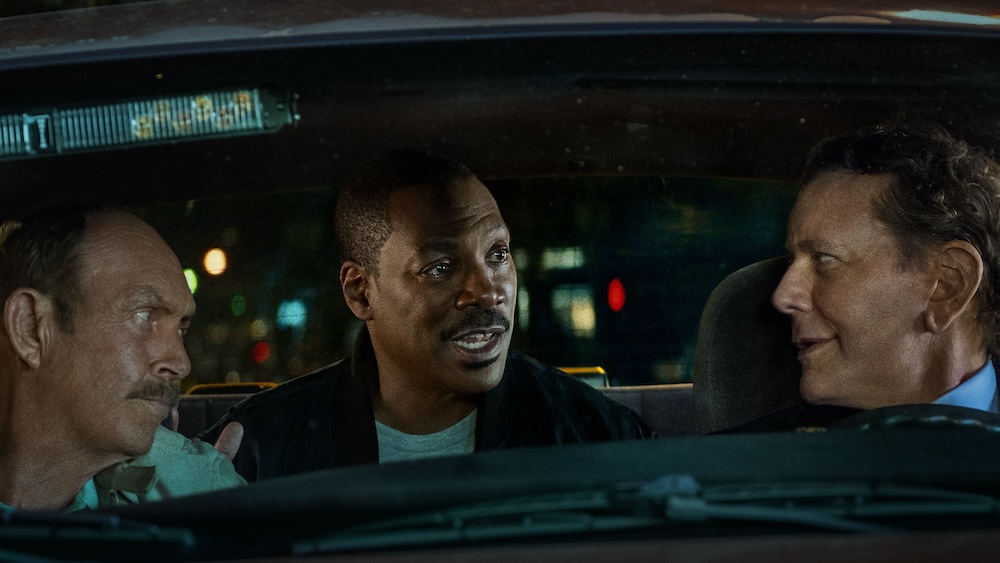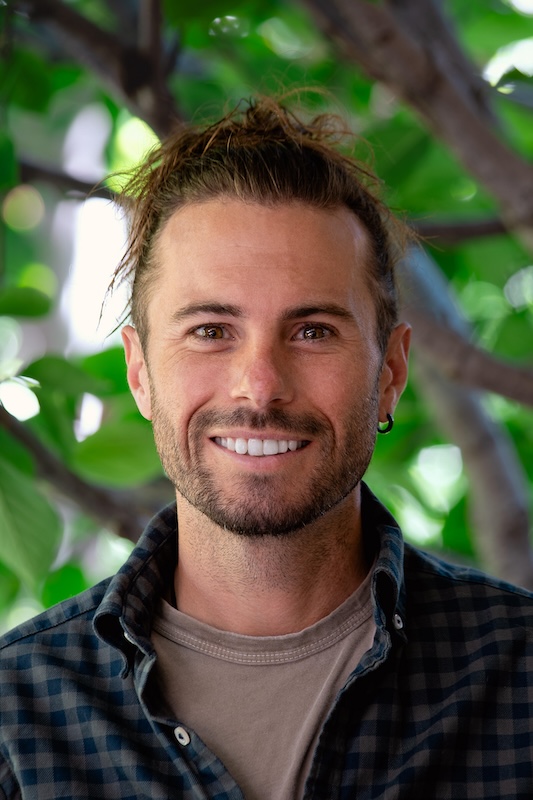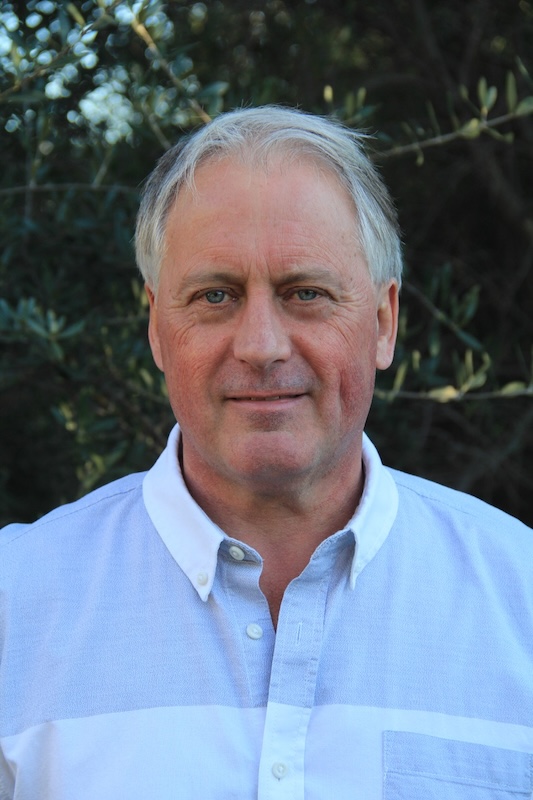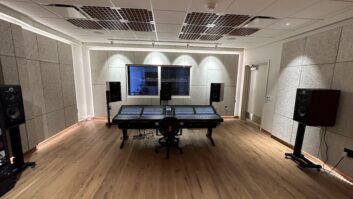
Enjoy the conclusion of our look behind the audio scenes of Beverly Hills Cop: Axel F.; don’t pass up Part 1!
HEIGHTENING THE HELICOPTER
A helicopter chase scene was another action-packed moment where the comedy needed to shine. On the sound effects side, Diebold worked with sound designer Randy Torres to record an Airbus H125 helicopter. The three-bladed vehicle used in the film has more of a turbine type of sound, according to Diebold. It’s very different from a typical two-blade helicopter that produces that classic “whop-whop-whop” sound.

Diebold and Torres spent three hours recording at the Oxnard Airport in Ventura County, Calif. Onboard the helicopter, Diebold used a Neumann RSM 191 microphone feeding a Sound Devices MixPre-6 digital recorder. “I love to use Mid/Side setups because it’s mono-compatible,” he notes. “That translates well in the film environment when you’re panning sounds to discrete channels. With stereo effects, sometimes you get phasing issues.”
Torres, meanwhile, was on the ground capturing super-fast helicopter pass-bys using a Schoeps M/S rig and another Sound Devices MixPre-6. They also set up distant mics to capture the pilot’s crazy maneuvers and the super-low flyovers. Diebold also had a Sanken CO-100K onboard, “because you never know what you’re going to get in the super-high frequencies when you pitch it down.”
Diebold wanted to mount microphones outside of the helicopter, but it turns out that’s not legal. “Mark ran into the same issue when he was filming it,” he says. “He did have one onboard camera, professionally mounted on the base of the helicopter like they do for news helicopters. So to record an exterior, onboard sound, we ended up opening the door. I tried to stick my head out and record the blades closeup, but the pressure and wind from the blades were unbelievably strong. It almost tore the microphone out of my hand!”
While the helicopter recordings gave Diebold the ingredients needed to bring realism into a scene where a helicopter is making crazy maneuvers, he found that he also needed to introduce a bit of that classic “whop-whopwhop” to make it read for the audience. “There was a conceptual aspect, too, where we took the liberty to not make it realistic at all, using abstract sounds instead of realistic helicopter blades,” he says.
When Captain Cade Grant (the villain, played by Kevin Bacon) shoots down the helicopter, Diebold could have made it sound extremely menacing and scary; because this is a comedy and Axel is in the helicopter screaming, he made it sound funny. “The bullet impact ‘tinks’ are almost cartoonish, just to make sure that it stays funny instead of getting too serious,” he says.
HAVING A BLAST AT A GUNFIGHT
When mixing any big action scene, there’s the question: Do the effects lead, or does the music? For a mansion gunfight near the end of the film, the excitement (and a bit of comedy) comes from the chaos of gunfire happening all around as a hail of bullets whiz by. Diebold says, “The bullet-bys and ricochets keep the energy alive. You can pan those in the surrounds and bring them down, and the frequency range doesn’t cover up the dialog, so you can keep them going even while there’s dialog happening.”

Massey’s challenge, then, was to keep the dialog feeling intimate and intelligible amid the off- screen gunfire and shouting. “It goes from wide shots where you can see everything blowing up and guns going off all over the place and people screaming and shouting, to a closeup of fairly quiet conversation, almost whispered,” he says. “You can’t just drop all the off-stage action; you have to keep it going for the audience.”
The ’80s-style gunshots in the original Beverly Hills Cop had a slappy sound that Diebold wanted to achieve for Axel F, while also making them feel extremely beefy. His work on the video game Call of Duty: Vanguard provided invaluable experience in sound designing guns for the small screen.
“Cutting guns for video games is a different style than you’d cut for movies because you typically deal with smaller speakers,” he explains. “Having that mindset, knowing that Axel F is going to be played on TVs, we cut everything to sound extremely big with a lot of mid-low frequencies that will cut through the dialog and music. Also, we would turn down our monitors so we could hear exactly what it would sound like when things were turned down. That ends up making it sound a lot bigger in the overall scheme of things.”
Working with Torres and sound effects editor Phil Barrie, Diebold created a huge collection of bullet ricochets and -bys to carry them through the gunfight. “We needed enough material to put in the Atmos object tracks,” he says. “We used some recordings I did a few years back where I used a slingshot to shoot pennies and quarters over three mics that were set up in a line and spaced five to ten feet apart. It’s an old technique that gives you this really cool, flippy sound. It’s like a bullet-by, but it’s twirly. That was used a lot in this movie.”
Crafting a comprehensible gunfight is challenging—what sounds will help the audience follow the action? Should the gunshot or the bullet ricochet be the hero at that moment? Making space for silence is important, too, notes Diebold. “When guns are shooting all over the place, it gets old and it loses its excitement. It helped to bring those sounds into the Atmos surround field. Much of the gunfire is happening on the second story, so they’re shooting down at everyone. It was cool to be able to utilize Atmos in that way.”
WORKFLOW INNOVATION
The sound of Beverly Hills Cop: Axel F might have an ’80s vibe at times, but the workflow definitely didn’t. During sound editorial, Diebold was embedded with the picture department at Bruckheimer’s facility while the rest of the sound team worked remotely. The facility’s editing suites were designed primarily for picture editorial, not sound, so the walls were thin and the acoustic treatment was lacking.
“When I moved into the room, we ordered a bunch of sound treatment material and added that to the space,” Diebold says. “I brought my 7.1 setup for monitoring; I had a Pro Tools rig and an Avid Media Composer rig as well. Both were on the Avid NEXIS server with the picture department, and we linked those together so that when I went into the Avid in my room, I could monitor levels by running everything through the FabFilter Pro-Q 3 plug-in to see what kind of frequencies were happening.”
The environmental challenges notwithstanding, Diebold enjoyed the benefits of working this way. “It saves a lot of time for the sound team,” he says. “We can spend more time on the creative aspect and less time conforming and keeping up to date with the picture crew. Usually, when we give the picture department stems, by the time they get those, the picture has already changed significantly, so there are holes in the 5.1 or stereo bounce. By being embedded with the picture department, I’m more up to date with changes and the AAF can easily be conformed in the Avid.”
The workflow—conceptualized by picture editor Dan Lebental—consisted of Diebold cutting a scene in Pro Tools, bouncing down his numerous tracks into more compact stems, creating an AAF that was dropped onto the NEXIS server, then importing into Avid Media Composer. Once it was in the Avid, Diebold did a quick mix.
“Dan [Lebental] and I started working together using this workflow back in 2019 on Spider-Man: Far From Home,” he says. “It’s a full-circle process because I’m creating my own AAF for some specific scenes, as the assistant editors are doing a lot of heavy lifting in adding sounds like they normally would. Ultimately, it makes the mixing side easier because I mixed it, so I know the levels aren’t all over the place. Honestly, I think working this way more often— integrating it into more movies and getting the whole sound crew involved in this process—is going to make everything better.”






